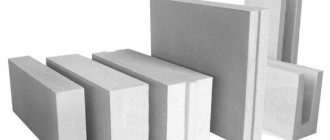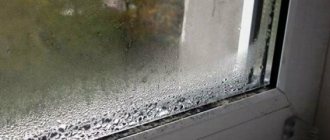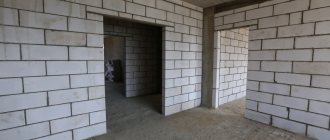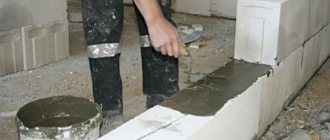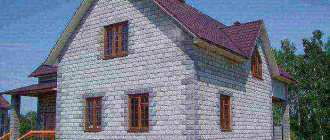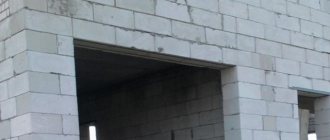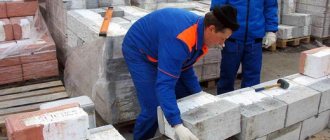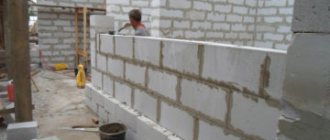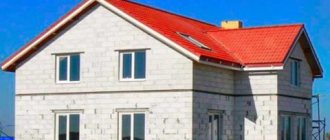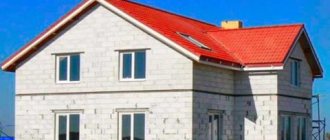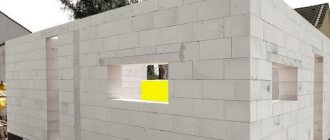What are aerated concrete blocks and how are they made?
Before we look directly at the pros and cons of aerated concrete, let’s decide and see what material we are dealing with.
There are several ways to manufacture aerated concrete products. In factory conditions, autoclave and hydration methods are used. However, the initial stages of the process are identical for all types.
Cleaning and preparing molds for pouring
There are two types of forms:
- collapsible - the design consists of a pallet, sides and several jumpers that can be removed to fill larger volume elements;
- cap-type – are a monolithic structure. Mainly used in large-scale production.
Preparation of the composition
Many formulations are used, and depending on their use, the final technical characteristics of the products differ.
A typical mixture consists of:
- cement, grade no less than M400 – 500 (50-70%);
- filler – sifted sand of fine fractions (20-40%);
- aluminum powder or paste (0.04-0.09%);
- lime (up to 5%);
- water (up to 0.8%).
Fill
The prepared mixture is poured into molds preheated to 400C and carefully leveled.
Drying.
This is where significant differences begin that affect the quality of the resulting blocks.
- When placed in an autoclave, hardening occurs at elevated pressure up to 12 bar, humidity and temperature up to 2000C. Such products are the most durable and high quality. Can be used for laying load-bearing walls.
- During hydration hardening, the molds are placed in a special box with heating and high humidity. This type of aerated concrete is used for insulation.
- In handicraft production, the forms are simply wrapped for several hours before being removed for further drying in an unsuitable room. It is better not to use such blocks anywhere at all.
General overview and features
First, you should study the composition of aerated concrete. Blocks are produced based on the following components:
- cement (from 50 to 70%);
- sand (20-40%);
- lime (5%);
- water (less than 1%);
- special additives (0.05-0.1%).
The mixture is poured into molds heated to 40 °C and sent to the autoclave. Aerated blocks suitable for masonry are manufactured only at large enterprises where there are chambers in which a pressure of up to 12 bar is created and a temperature of about 2000 ° C. The mixture contains aluminum powder, which activates rapid gas formation. It is this additive that makes autoclaved aerated concrete a cellular (porous) material. Air bubbles in the structure of the stone determine the thermal insulation characteristics and allow it to “breathe”.
After the aerated concrete mass has completely hardened, it is cut using strings into blocks of certain sizes and configurations. High-quality stone, produced in compliance with technology, is characterized by ideal precision of lines. Regular parallelepipeds stacked on top of each other provide thin seams between the rows of the wall being built. Cold bridges can be avoided, thereby significantly reducing the heat loss of the building.
Blocks that have not been autoclaved are also sold. They are dried in hydration boxes under conditions of elevated temperature and humidity. Accordingly, the strength of concrete is 3 times less than that obtained using the autoclave method. This type of aerated concrete is suitable for insulation, but not for masonry.
And the quality of blocks made by hand is very low. Reviews about them are a continuous stream of negative statements. But, given the fact that in each of the three production options the finished material is called “gas block”, consumers make a generalization. Accordingly, an opinion is formed that there are much more minuses than pluses. In fact, high-quality aerated concrete has very few disadvantages. Experts in their reviews indicate that with the correct arrangement of the foundation and compliance with technology, the operational parameters of the blocks are not much inferior to brick or cinder block.
Technical characteristics of blocks
1. Dimensions.
Standard linear dimensions of parallelepiped blocks:
- length – from 500 to 600 mm;
- height – 200 mm;
- thickness - from 75 mm to 500 mm.
2. Configurations.
They are produced in the form of parallelepipeds with 6 smooth surfaces or with grooves and ridges on 2 end faces. U-blocks are also produced for arranging armored belts.
3. Strength of aerated concrete.
The material is lightweight, but at the same time has good strength. Depending on the brand, the compressive strength coefficient ranges from 1.5 to 3.5 kgf/cm².
4. Classification of grades depending on the density of aerated concrete:
- D300-D500 – thermal insulation;
- D500-D900 - an intermediate option used for structural and thermal insulation work;
- D1000-D1200 – structural aerated concrete.
Advantages and disadvantages
All of the above properties of aerated concrete blocks should be taken into account during construction. Depending on the type of future building (house, bathhouse, garage), you can use wall stone of various sizes and densities.
Of course, aerated concrete blocks, produced both by autoclave and obtained by drying in hydration chambers, have pros and cons. But in the first case, the declared properties practically coincide with the operational ones, and in the second, the material may behave “inappropriately”. After all, the parameters are designed for the same climatic conditions, and developers make their own adjustments without taking into account expert reviews on construction from aerated blocks.
1. Advantages of aerated concrete:
- Ease of processing.
Using a tool, gas blocks can be easily processed manually. You can saw, make recesses, grind surfaces.
- Thermal insulation properties.
Using D500 and D600 brand blocks, the developer achieves two goals at once: constructing the frame of a house or bathhouse, as well as thermal insulation of these buildings.
- Soundproofing.
The ability to soundproof directly depends on the brand of aerated concrete blocks and the thickness of the walls.
- Fire resistance.
Aerated concrete blocks are a non-flammable material. They have the highest fire resistance class.
- Environmentally friendly.
Gas blocks are safe. Aerated concrete can be harmful to health in one case - if there are radioactive elements in the base mixture. But this is practically impossible on an industrial scale when the components undergo laboratory testing. During operation, the blocks do not react to form toxic substances. In terms of its environmental characteristics, aerated concrete is comparable to natural materials and is not much inferior to wood.
- Light weight.
It is very light, so it is easy to work with. You can do the laying yourself.
- Large product size.
This option should also be considered a plus. The construction of houses made of aerated concrete is carried out much faster than similar ones made of brick.
- Resistance to biological effects.
Aerated blocks are an environment unfavorable for the formation of mold, fungal colonies and bacterial growth. The material does not need to be treated with antiseptics.
2. Disadvantages and negative parameters:
- Fragility.
This disadvantage of the block manifests itself during transportation, during the laying process. But the main point is the predisposition to cracking of the walls in the event of improper foundation arrangement. Small irregularities in the strip base - and after 2-3 years the blocks will begin to crack. The problem can be solved by using mesh reinforcement at intervals of 3-4 rows.
- High water absorption coefficient.
It can be reduced with special impregnations, which are applied before plastering. It is strictly not recommended to leave aerated concrete walls “open”.
- Problem with fasteners on aerated concrete surfaces.
Massive shelves, cabinets and other objects are very difficult to mount on the wall. The best solution is self-tapping screws. But they have their own nuance - oxidation, and as a result, loss of aesthetic appearance.
- The frost resistance parameter is overestimated by sellers.
Some experts claim that the real frost resistance of D500 blocks is only 25 cycles. Although sellers declare at least 50 (this is the indicator suitable for exterior decoration). Frost resistance at the F50 level is observed in gas blocks of grades D600 and higher.
- Presence of free lime.
This deficiency leads to active corrosion processes occurring inside aerated concrete. Lime corrodes sections of pipes, fittings, jumpers and other metal elements.
Brands and types of aerated concrete blocks
First of all, aerated concrete blocks are divided by brand. The brand is actually the density of the product.
| Brand | Strength MPa | Thermal conductivity W/(M2x0C) | Application (characteristics) |
| D350 | 0,7-1,0 | 0,08-0,09 | A very fragile material, used as insulation. |
| D400 | 1-1,5 | 0,1-0,11 | It is used as insulation, for filling openings and constructing walls. |
| D500 | 2-3 | 0,12-0,13 | Load-bearing walls in low-rise construction. |
| D600 | 2,5-4,5 | 0,14-0,15 | Load-bearing walls with ventilated facades |
There are special products created according to a special recipe with the addition of chemically active modifiers, which have increased heat resistance or sound insulation. Such blocks are used for cladding or construction of specialized structures.
Products are also divided according to the type of binder: lime-gypsum and cement. And by type of fillers: slag, ash, sand, using waste from ferroalloy production and secondary products. The use of all these materials is regulated by State Standards. These materials have little effect on the basic strength and thermal insulation characteristics of the final product.
Advantages of aerated concrete blocks
+ 1. Thermal insulation level
The main indicator that sales managers focus on is the incredible level of thermal insulation of the material. An aerated concrete wall will have a lower cost than a brick structure with comparable thermal insulation properties.
+ 2. High precision and large dimensions
High precision and large block sizes allow the construction of walls with minimal deviations and high speed. Accordingly, the costs of external finishing are reduced. The use of elements with grooves prevents the formation of cracks in the masonry.
+ 3. Possibility of refusing to use cement composition for masonry
Using a special adhesive instead of a regular cement mixture minimizes the effect of cold bridges. This reduces heat loss from 25% to 8-10%. The amount of glue used is significantly less, up to 5 times, compared to cement mortar.
+ 4. Good level of vapor and air permeability
The coefficient of vapor and air permeability is similar to wood structures. It is argued that air circulation and humidity levels in such a house will be regulated naturally, creating an optimal microclimate.
+ 5. Fire resistance
High level of resistance to fire and other aggressive environmental influences.
+ 6. Light weight
The low weight of the elements allows you to create lightweight walls that do not require a heavy-duty foundation, which also reduces the cost of construction.
+ 7. Easy machinability
Aerated concrete blocks are easy to saw, drill and can be processed by hand.
+ 8. Ecological cleanliness
Aerated concrete blocks are an environmentally friendly building material. In this regard, it is better than brick but worse than wood.
+ 9. Possesses biological resistance
Aerated concrete blocks are resistant to damage by various microorganisms, rodents and insects. Although a small green coating can still form on it, but only if it is constantly moistened.
+ 10. Frost resistance
Aerated concrete blocks have a good level of frost resistance, which is F-50, i.e. 50 freeze-thaw cycles.
4.4. Insulation and brick cladding
In terms of thermal conductivity, aerated concrete is close to wood. But, as a rule, heat does not escape through the material, but through areas of its rupture. When building a structure from aerated concrete blocks, an adhesive solution is used for the seams, 1-3 mm thick.
Therefore, in aerated concrete structures there is a minimum number of “cold bridges” and there is no need to use additional insulation.
In order for a building made of aerated concrete to last its entire operational life, it is necessary to take into account the characteristics of the material.
Helpful advice! Experts recommend studying it after building a house. Thermal imaging examination will allow you to find out whether there are seams and joints in the building that need to be sealed.
In addition to the fact that heat can escape through the walls, it can also escape through other parts of the house. Therefore, it is important to make sure that everything is done according to technology, without errors, as a result of which heat can escape. For masonry, you should not use cement-sand mortar, because the thickness of the joints will increase and “cold bridges” will form.
Reviews from owners of houses made of aerated blocks are mostly positive.
A house made of aerated blocks can be covered with bricks. Walls made of aerated concrete will not become damp if there is ventilation under the eaves and at the base level. It is not recommended to do a continuous finish, since steam exchange through the walls will be disrupted.
In general, aerated concrete is a worthy material for building a house, since it has many advantages compared to foam concrete and brick. Therefore, if you want to build a house yourself from aerated concrete, arm yourself with instructions, recommendations and you will succeed.
Disadvantages of aerated concrete blocks
Let’s look point by point at whether the information provided by sellers is really true.
— 1. Required wall thickness
Many manufacturers regulate a sufficient wall thickness of 380mm. But sellers forget to mention that this thickness is sufficient under ideal operating conditions and absolutely dry building material. According to SNiP 23-01-99 “Building Climatology”, the thermal resistance of an external wall for central Russia is a coefficient of 3.15. From another source SNiP II-3-79 * “Construction Heat Engineering” we find out that the moisture level of aerated concrete blocks varies from a minimum of 5% to a maximum allowed of 12%. For a D500 brand product this will be 0.17 W/(M2x0C). As a result, we find that the minimum wall thickness for the Moscow region should be 535 mm.
We take into account cold bridges, which provide an additional 10% deterioration in protection - 588 mm. The presence of technologically necessary lintels and reinforced belts to strengthen window openings, which add another 10 to 30%, and we get a wall 65 cm thick.
— 2. High hygroscopicity
One of the most significant disadvantages of aerated concrete blocks is their high hygroscopicity. The amount of moisture in the total mass can reach 35%. This practically negates the thermal insulation qualities of the material. In addition, swelling of the elements occurs, which leads to linear deformations, cracking and peeling. It is recommended to systematically treat surfaces with special water-repellent impregnations every 2 years, which leads to a significant increase in operating costs.
— 3. The appearance of cracks due to improper installation of the foundation
According to messages on numerous construction forums, there is a problem of cracking of walls, both along the masonry lines and directly in the blocks themselves. Practice shows that microcracks appear as early as 2-4 years of operation; up to 20% of blocks can be affected by them. This is due to the fact that large building elements are very sensitive to foundation shrinkage, thus the plus of aerated concrete has turned into a minus. The glue used to hold the blocks together cannot ensure the solidity of the structure, as happens with heavier brickwork. The conclusion that follows is that you won’t be able to save on the foundation.
— 4. Problems with interior decoration
Another disadvantage of aerated concrete appears during interior decoration. Manufacturers recommend using gypsum-based plaster, and it actually has a high level of adhesion to aerated concrete surfaces. But with sudden thermal changes, cracks immediately form near such a wall, following the contours of the masonry. These places must be reinforced with mounting mesh, which further increases the cost of finishing work.
Results
Aerated concrete blocks are a high-tech material. Its production and installation requires a high level of knowledge and strict adherence to process technology.
1. The feasibility of using aerated concrete blocks as the main structural material for the construction of a building is a big question, but with strict adherence to all technology it is possible.
2. The use of aerated concrete elements for the high-speed construction of internal lintels is, in principle, encouraged.
3. As a heat-insulating material, aerated concrete slabs do not have a decisive advantage over traditional polystyrene foam or mineral wool, either in price or in ease of installation, and are even somewhat inferior in heat-insulating properties.
In what cases is it better to refuse construction from aerated blocks?
Finally, I would like to say that, despite the versatility of aerated concrete blocks, there are areas where their use is inappropriate.
These include:
- Installation of stoves, various modifications, fireplaces and chimneys;
- Construction of baths and swimming pools in climate zones with cold winters;
- Laying out walls at and below ground level;
- Construction of walls in contact with soils with a high content of salt and sulfates;
- Construction of houses from aerated concrete blocks, without following special conditions, houses in seismic zones;
